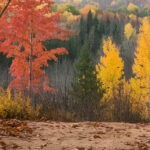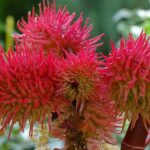Nestled among the pantheon of medicinal herbs and botanical curiosities lies wormwood, a plant steeped in ancient mystique and enduring allure. With its silvery-green leaves and bitter aroma, wormwood, scientifically known as Artemisia absinthium, has woven itself into the tapestry of human history, revered for its medicinal properties and infamous for its role in the enigmatic drink absinthe. Beyond its associations with the famed green elixir, wormwood boasts a rich folklore and a range of traditional uses, making it a captivating subject of study for herbal enthusiasts and historians alike.
Beyond its historical and cultural significance, incorporating wormwood into your yard or garden can offer a range of practical benefits. As a natural insect repellent, wormwood may help deter pests like mosquitoes, flies, and even wasps, making it a valuable addition to outdoor spaces, especially in the warmer months. Its aromatic foliage also adds a unique texture and color to garden beds, providing visual interest and diversity to your landscaping. Additionally, wormwood is known for its drought tolerance and ability to thrive in poor soil conditions, making it a resilient and low-maintenance plant for those looking to add a touch of greenery to their outdoor spaces without extensive care.
Can wormwood be found in North America?
Yes, wormwood (Artemisia absinthium) can be found in North America, particularly in parts of the United States and Canada. It is not native to the continent but has been introduced and can now be found growing in the wild in various locations. However, its distribution in North America is not as widespread as in its native range in Europe, Northern Africa, and Western Asia.
Can wormwood be harmful to pets?
Yes, wormwood can be harmful to pets if ingested in large quantities. Wormwood contains compounds like thujone, which can be toxic to animals. Ingestion of wormwood can lead to symptoms such as vomiting, diarrhea, tremors, seizures, and even liver and kidney damage in severe cases.
It’s important to keep wormwood and other potentially toxic plants out of reach of pets, and if you suspect your pet has ingested any part of the plant, it’s best to contact your veterinarian immediately for advice.

Can you plant wormwood in a pot?
Yes, you can plant wormwood in a pot. Wormwood can be grown in containers, which is especially useful if you want to control its spread in your garden or if you have limited space. When planting wormwood in a pot, make sure to use well-draining soil and place the pot in a location where the plant will receive full sun. Water the plant moderately, allowing the soil to dry out between waterings. Wormwood can grow quite tall, so choose a large enough pot to accommodate its mature size.
What does wormwood look like?
Wormwood is a perennial herb that can grow up to 3 feet tall. It has silvery-green, deeply lobed leaves that are covered in fine hairs, giving the plant a soft, fuzzy texture. The leaves are arranged alternately along the stem and have a strong, bitter aroma when crushed. They also produce small, yellow flowers that are clustered together in cylindrical spikes at the tips of the stems. The flowers bloom in late summer to early fall and are attractive to pollinators like bees and butterflies.
Does wormwood help repel insects?
Yes, wormwood is believed to have insect-repellent properties, including the ability to deter wasps. Some people plant wormwood in their yards or gardens to help repel insects, including wasps. The strong, bitter aroma of wormwood is thought to be unpleasant to insects, including wasps, and may help deter them from nesting or hanging around the area.
However, it’s important to note that the effectiveness of wormwood as a wasp deterrent may vary, and some sources suggest that its effectiveness against wasps is limited. Additionally, while planting wormwood may help reduce the presence of wasps to some extent, it may not completely eliminate them, especially in areas with high wasp populations.
As with any natural repellent, it’s best to use wormwood in conjunction with other methods of wasp control, such as removing food sources and nesting sites, to help reduce the presence of wasps in your yard.












